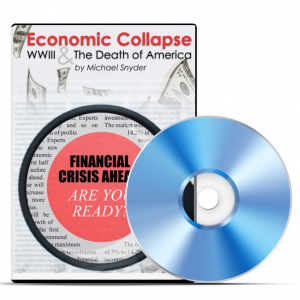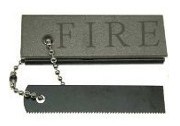|
|
 Guest Post Lee Flynn Guest Post Lee Flynn
Fulfilling our basic needs of warmth, protection and food in an apocalyptic situation or after natural disaster can be challenge, but it doesn’t have to be if you prepare properly ahead of time. Spending some time and money investing in quality food and supplies will take you a long way in desperate times. The last thing you want to do is be stuck without the basic necessities in a bad situation.
Creating Warmth
In a natural disaster, you might be facing snow, wind, rain, or freezing temperatures. Investing in a subzero proof sleeping bag for each person in your family will ensure warmth no matter how cold it gets; and protect them from frostbite and hypothermia. Fleece blankets for during the day time are also good to keep in your kit, since shelters aren’t always the warmest.
Thermal under armor, ski glasses, waterproof boots, waterproof gloves, lined coats and hats should also be in your kit for each person to keep everyone dry and warm. Thin gloves and beanies allow water to seep in and chill the body down leading to hypothermia. Keeping your health in a disaster is of up-most importance, so don’t skimp (Read more....) […]
 Guest Post- Danielle M. Guest Post- Danielle M.
The Colorado flooding earlier this year washed away highways, interstates and even small towns. In its wake, it left behind another lesson on disaster clean up and preparedness.
The storm
Heavy rainfall hit on September 9, and didn’t let up until Sept. 13. The storm front was trapped against the Rockies, which meant four days of heavy rain. Rainfall totals equaled 14.62 inches — about two-thirds of the annual rainfall for the area.
The aftermath
Nine people died in the flooding, and many, many more lost their homes. Eighteen towns, including Denver, were hit by flash flooding. Smaller towns high in the mountains were hit particularly hard, and assistance was a long time coming thanks to roads being completely washed out. In many places, only bedrock is left where asphalt used to be — a state that could remain until 2015.
Left without options for getting down the mountain, Colorado flood survivors can (Read more....) […]
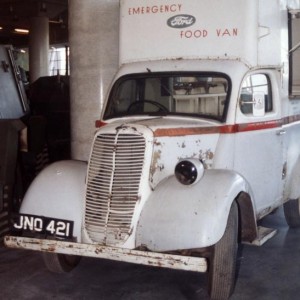 by Stacey Thompson by Stacey Thompson
Typhoons, earthquakes, floods, and a host of man-made disasters are a regular thing nowadays. Our lack of empathy for the environment, as well as each other, has facilitated an increasingly dangerous world for us.
In many of these situations, there really is no recourse but to evacuate from the affected area. For those who are fortunate enough to have their own home, and have enough space in their garage or yard to accommodate another vehicle, my suggestion is to have an emergency vehicle that is equipped to handle emergencies of various kinds.
This vehicle need not be expensive. A second-hand van or station wagon with the proper accessories and add-ons will more than do. A neighborhood association can pitch in to maintain and add the necessary upgrades to the van; services like American Van Equipment can provide the proper parts and installation at affordable rates.
Top Rack & Ladder
This is probably the most basic, and at the same time, the most useful feature you can (Read more....) […]

(Guest Article by Dave Webb)
The following is from an article in the Dayton Daily News in Ohio. Anyone who is not alarmed by this quote needs to be. It effects everyone. “A typical middle-income family making $40,000 to $64,000 a year could see its taxes go up by $2,000 in 2013 if lawmakers fail to renew a lengthy roster of tax cuts set to expire at the end of 2012, according to a new report Monday, Oct. 1, 2012. Taxpayers across the income spectrum would be hit with large tax hikes, the Tax Policy Center said in its study, with households in the top 1 percent income range seeing an average tax increase of more than $120,000, while a family making between $110,000 to $140,000 could see a tax hike in the $6,000 range.” Normally I would not quote anyone from the wire services. If there is ever a Pravda(Moscow newspaper) in the United States, surely this is it. This one got through the editors. I don’t know why but it did. The FED is busy printing money. They do not have time to comfort us. The new idea which is very old is to make our money worthless. This encourages unions and everyone else to re-negotiate wages every year. Obviously if everything is inflating at say 10% per year(Off the wall (Read more....) […]

When economists talk about recessions they basically mean a slowdown in macro commercial activity. This means than a recession is somewhat less disastrous than a depression on both a personal and national level. That said, any substantial halt in financial activity comes with repercussions. The remainder of this article will cover some key definitions and strategies that deal with weathering these dour fiscal events relatively unscathed.
Everyone hears the term double dip recession in the media, but what does it really mean? Well, a double dip recession in economics with what’s known as a W-shaped recession. The W-shape recession gets its name for the shape of the economic activity once plotted in chart form. Basically a double dip or W-shape recession conforms to the following pattern of activity: the economy suffers some loss, the economy slightly recovers on the heels of some growth, then the economy falls back into decay, and finally the economy recovers from that second bout of losses. The recession in the early 1980s is viewed by (Read more....) […]
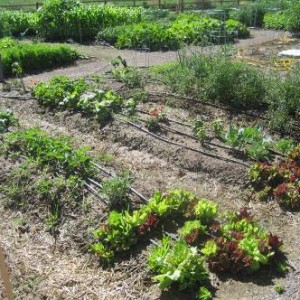 ***The following is a guest post for Survival by Barbara Fix*** Move over for the next generation… the green movement’s here to stay! It’s taken over our TV programs, big box marketing strategies, and has captured the hearts and minds of many. The green movement is replacing consumerism with practical economy that is user friendly to our overburdened landfills. But nowhere is it evidenced more than with the new wave of organic gardening. Surprisingly, the first green movement began in the early 1900’s in a reaction to synthetic fertilizer at the beginning of the new industrialized agriculture. Somehow, it died a quiet death until it heated back up, starting in 1990. Since then, the demand for organic foods has increased an impressive 20% each year. ***The following is a guest post for Survival by Barbara Fix*** Move over for the next generation… the green movement’s here to stay! It’s taken over our TV programs, big box marketing strategies, and has captured the hearts and minds of many. The green movement is replacing consumerism with practical economy that is user friendly to our overburdened landfills. But nowhere is it evidenced more than with the new wave of organic gardening. Surprisingly, the first green movement began in the early 1900’s in a reaction to synthetic fertilizer at the beginning of the new industrialized agriculture. Somehow, it died a quiet death until it heated back up, starting in 1990. Since then, the demand for organic foods has increased an impressive 20% each year.
And rightfully so! If the past few decades has taught us anything, its that if we want to stay healthy, eating foods that we won’t have to sneak up on, we need to get re-acquainted with our back yards and turn them into something useful like a vegetable garden. Even better is planting those gardens with heirloom seed and (Read more....) […]
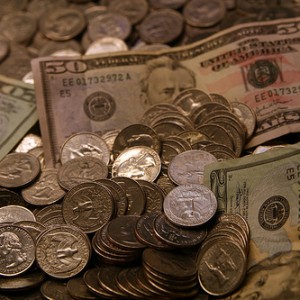 Please be warned – the statistics about the economy that you are about to read are likely to completely blow your mind. The U.S. economy is in far, far more trouble than the mainstream news would have you believe. Most Americans are still convinced that the economic downturn that we have been experiencing will soon be over and that things will shortly get back to “normal”. But that is not what is happening. What we are actually witnessing is the disintegration of the foundations of the U.S. economic system. The survival of the American middle class is now in serious jeopardy. In fact, the survival of the American way of life is now in serious jeopardy. Today, more Americans are living in poverty than at any other time in history. Millions upon millions of Americans are out of work and it now takes the average unemployed worker an average of over 35 weeks to find a job. Home sales are at near record lows. Home foreclosures are at record highs. Factories and jobs continue to leave the United States at a dizzying pace and the U.S. government has piled up the biggest (Read more....) Please be warned – the statistics about the economy that you are about to read are likely to completely blow your mind. The U.S. economy is in far, far more trouble than the mainstream news would have you believe. Most Americans are still convinced that the economic downturn that we have been experiencing will soon be over and that things will shortly get back to “normal”. But that is not what is happening. What we are actually witnessing is the disintegration of the foundations of the U.S. economic system. The survival of the American middle class is now in serious jeopardy. In fact, the survival of the American way of life is now in serious jeopardy. Today, more Americans are living in poverty than at any other time in history. Millions upon millions of Americans are out of work and it now takes the average unemployed worker an average of over 35 weeks to find a job. Home sales are at near record lows. Home foreclosures are at record highs. Factories and jobs continue to leave the United States at a dizzying pace and the U.S. government has piled up the biggest (Read more....)
[…]
|
|








